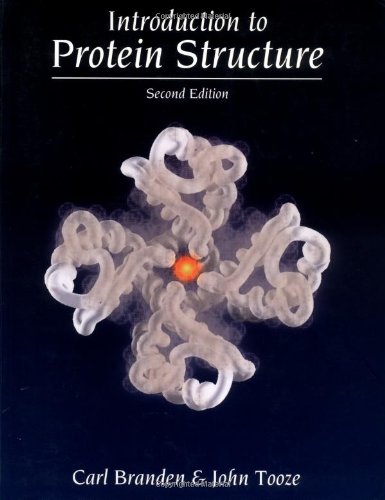Introduction to Protein Structure book
Par shiffer andrew le jeudi, janvier 19 2017, 00:32 - Lien permanent
Introduction to Protein Structure. Carl Branden, John Tooze

Introduction.to.Protein.Structure.pdf
ISBN: 0815323050,9780815323051 | 415 pages | 11 Mb

Introduction to Protein Structure Carl Branden, John Tooze
Publisher: Taylor & Francis
Proteomics & Structural Bioinformatics Books 1. Our publications include such classics as “Molecular Biology of the Cell,” “Essential Cell Biology,” “Janeway's Immunobiology,” “The Immune System,” “Human Molecular Genetics,” and “Introduction to Protein Structure.”. The fact that they are usually overlooked or even omitted from many studies may introduce significant biases in “-omics” analyses [15]. Most of the alignment methods rely on structure comparison to identify structural, evolutionary, and functional relationships between proteins [1]. Biochemistry Introduction Review - Image Diversity: amino acid molecule protein molecule carbohydrate molecule lipid molecule nucleic acid molecule. Protein structure alignment is a useful strategy for structural biology. Introduction to Protein Structure by Carl-Ivar Branden, John Tooze 2. Proteins play an important role in living systems due to their unique structures that are large, flexible and complex (Schellekens 2004, Kumar et. What are What are some examples of the structural function of organic molecules? Computer Simulation of Liquids .D. [2] - Introduction to Protein Structure by Branden and Tooze. Molecular Modelling: Principles and Applications, introduction to protein structure, M.P. Proteomics: From Protein Sequence to Function by S. [3] - A perspective on enzyme catalysis by Stephen Bankovic and Sharon Hammes-Schiffer [4] - RCSB protein database. The proposed model for the search for conservative areas in a protein family was introduced on the basis of geometric characteristics of the polypeptide backbone conformation [2] and information theory. Utilizing a biochemical approach, such as limited proteolysis coupled to N-terminal sequencing or mass spectrometry, can yield empirical information from the yet unknown protein structure.